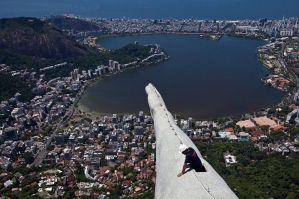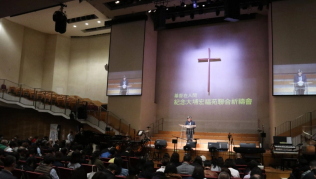Christ the Redeemer status in Rio de Janeiro, Brazil, was damaged during a lightning storm last week. Restoration workers have began repairing the 92-year-old iconic statue.

The 125-foot-tall (38 meters) by 92-foot-wide monument of Jesus Christ was struck by lightning on January 17, 2014, when a powerful electric storm swept through the area last week, emitting more than 40,000 lightning throughout the city of Rio. Workers discovered that its head, right middle finger and thumb have been damaged, which they've attributed to last week's storm and a similar storm last month.

Officials said they are planning to add to existing lightning rods as a prevention to further damages.
"The crown of the head is a lightning rod, but it isn't reaching all the way to the middle finger where the clouds generally come when coming from the east and the sea," said Clesio Dutra, engineer in charge of repairing the figure, according to Weather Channel, "so we're going to extend the lightning rods until the middle finger. The work is already approved and the structure is very sturdy."

The idea of erecting a large statue atop Corcovado was first suggested in the mid-1850s by Catholic priest Pedro Maria Boss. But it wasn't until 1920 did a proposal for a landmark statue on the mountain get accepted by the government. The donations came mostly from the Brazilian Catholics.
A symbol of Brazilian Christianity, the statue has become an icon for Rio de Janeiro and Brazil. It is made of reinforced concrete and soapstone, and was constructed between 1922 and 1931. It was dedicated on Oct. 12, 1931.
Christ the Redeemer is the world's largest Art Deco statue. It stands on top of Corcovado mountain, overlooking the entire city of Rio.
According to officials, the statue is struck by lightning on an average of six times each year.









